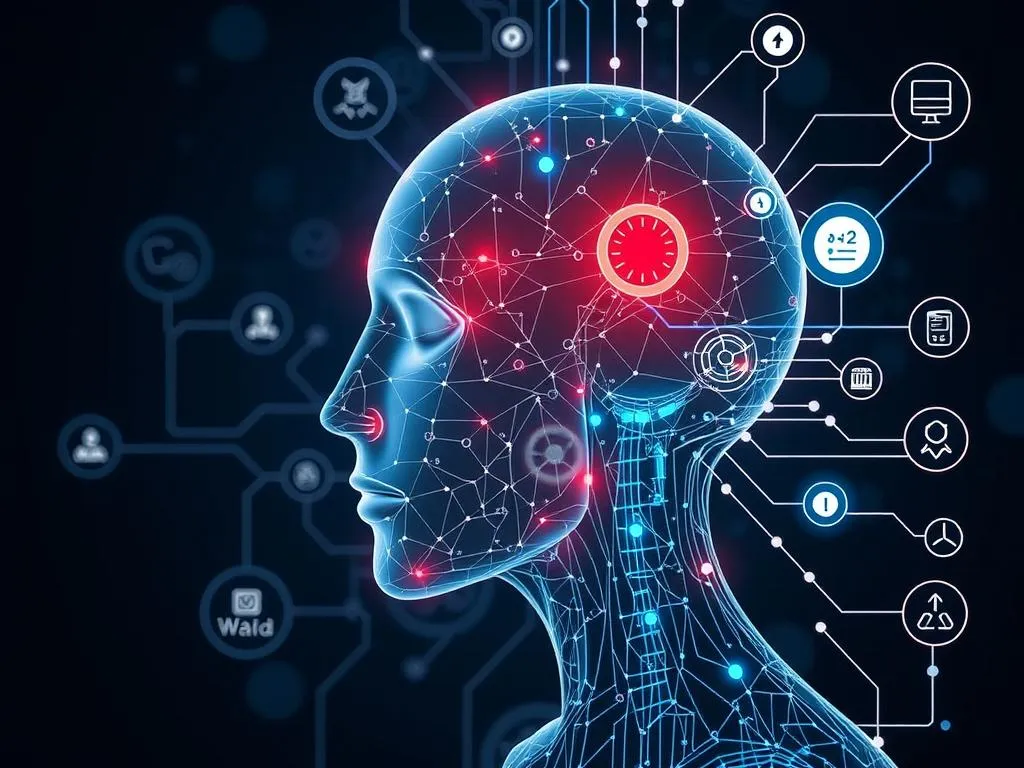AI assistants are transforming interactions with technology, providing personalized support across personal and professional domains. Explore their history, how they work, applications, benefits, challenges, and future trends in this comprehensive guide.
Understanding AI Assistants: A Comprehensive Guide
In the digital age, AI assistants have become indispensable, seamlessly integrating into our smartphones, homes, and workplaces. From setting reminders and answering questions to automating customer service and managing complex workflows, these intelligent software agents are transforming how we interact with technology. As artificial intelligence (AI) advances, AI assistants are growing more sophisticated, offering personalized and proactive support.
This comprehensive guide explores what AI assistants are, their history, how they work, their types, applications, benefits, challenges, and future trends in 2025, providing a clear and engaging overview for everyone from casual users to business professionals.
What Are AI Assistants?
AI assistants, also known as virtual assistants or digital assistants, are software programs that leverage artificial intelligence to understand user commands—via text or voice—and perform tasks or provide information. They use natural language processing (NLP) and machine learning (ML) to interpret human language, making interactions feel conversational and intuitive. Popular examples include Apple’s Siri, Amazon’s Alexa, Google Assistant, and Microsoft’s Copilot, which handle tasks like scheduling, answering queries, or controlling smart devices.
Unlike traditional software, AI assistants learn from user interactions, improving their accuracy and relevance over time. They bridge the gap between humans and technology, simplifying daily routines and enhancing productivity across personal and professional settings. In 2025, their role is expanding, with applications in homes, businesses, healthcare, and more, driven by advancements in generative AI and large language models (LLMs) (TechTarget).
History and Evolution of AI Assistants
The journey of AI assistants began with early experiments in conversational computing:
- 1966: ELIZA, created by Joseph Weizenbaum at MIT, was one of the first chatbots, simulating a psychotherapist’s responses using simple pattern-matching (Tribulant Blog).
- 1972: PARRY, developed by Kenneth Colby, advanced chatbot capabilities by simulating an overly complex personality, marking progress in conversational AI.
- 1990s–2000s: Speech recognition software like Dragon NaturallySpeaking laid the groundwork for voice-based assistants, though limited by processing power (Voicebot.ai).
- 2011: Apple launched Siri, widely considered the first mainstream AI personal assistant, integrated into iPhones and capable of voice-driven tasks like sending texts or setting reminders (Built In).
- 2014–2016: Amazon’s Alexa (2014), Google’s Assistant (2016), and Microsoft’s Cortana (2014) followed, introducing smart speakers and broader integrations, making AI assistants household names.
- 2020s: The rise of generative AI, powered by LLMs like those behind ChatGPT, transformed assistants into more conversational and versatile tools, capable of tasks from coding to creative writing (Salesforce).
By 2025, AI assistants have evolved from rule-based systems to sophisticated agents that understand context, learn from interactions, and even offer proactive assistance, reflecting decades of progress in AI and computing.
How AI Assistants Work
AI assistants operate through a multi-layered process that combines advanced technologies to deliver seamless user experiences. Here’s a breakdown of their core components:
- Input Processing: Assistants accept inputs via text (e.g., typing a query) or voice (e.g., speaking to a smart speaker). For voice inputs, Automatic Speech Recognition (ASR) converts spoken words into text (Juro).
- Natural Language Understanding (NLU): Using NLP, the assistant parses the input to identify the user’s intent and extract key details. For example, “Set a reminder for 3 PM” is interpreted as a command to create a calendar event.
- Dialogue Management: This component manages the conversation flow, deciding how to respond based on context and previous interactions. It ensures the assistant maintains coherence in multi-turn dialogues.
- Action Execution: The assistant performs the requested task, such as retrieving data (e.g., weather updates), interacting with APIs (e.g., booking a ride), or controlling devices (e.g., turning on lights).
- Response Generation: The assistant crafts a response using Natural Language Generation (NLG), delivered as text or converted to speech via Text-to-Speech (TTS) for voice assistants.
These processes often rely on large language models (LLMs), trained on vast datasets to understand and generate human-like responses. Cloud computing powers the heavy computational demands, with assistants sending requests to servers for processing and returning results in real time (IBM). Integration with external services—via APIs for weather, calendars, or smart home systems—enables assistants to perform diverse tasks.
Types of AI Assistants
AI assistants vary in functionality, deployment, and purpose. Here are the main categories:
| Type | Description | Examples |
|---|---|---|
| General-Purpose Personal | Handle a wide range of tasks for individual users, such as reminders or music playback. | Siri, Alexa, Google Assistant |
| Enterprise Assistants | Designed for business use, automating customer service, scheduling, or internal support. | Salesforce Einstein, Zendesk AI |
| Specialized Assistants | Tailored for specific industries like healthcare or finance, offering domain expertise. | Ada Health, Fintech chatbots |
| Productivity Assistants | Focus on enhancing work efficiency, aiding with writing, coding, or data analysis. | Grammarly, GitHub Copilot |
- General-Purpose Personal Assistants: These are consumer-facing, integrated into devices like smartphones or smart speakers, and perform tasks like answering questions or controlling smart homes (Built In).
- Enterprise Assistants: Used in businesses to automate customer interactions or streamline operations, such as answering FAQs or processing orders (Botpress).
- Specialized Assistants: Industry-specific, like healthcare assistants for patient engagement or financial assistants for account inquiries (Dialpad).
- Productivity Assistants: Enhance professional tasks, such as writing polished emails or generating code, boosting efficiency (Lindy).
These categories reflect the versatility of AI assistants, catering to both personal and professional needs.
Applications and Use Cases
AI assistants are transforming industries and daily life with their diverse applications:
- Personal Use:
- Daily Tasks: Setting alarms, reminders, or to-do lists (e.g., Siri scheduling a meeting).
- Entertainment: Playing music or podcasts via Alexa.
- Smart Home Control: Adjusting lights or thermostats with Google Assistant.
- Information Retrieval: Answering questions on weather, news, or trivia.
- Business and Enterprise:
- Customer Service: Automating responses to common queries, reducing wait times (e.g., Zendesk AI chatbots) (Botpress).
- Sales and Marketing: Personalizing customer interactions or analyzing data for insights.
- Internal Operations: Managing schedules, triaging emails, or generating reports (Salesforce).
- Healthcare:
- Patient Support: Reminding patients about medications or appointments (e.g., Ada Health).
- Data Processing: Analyzing medical records for diagnostics (Botpress).
- Finance:
- Account Management: Providing balance updates or transaction histories.
- Fraud Detection: Monitoring for suspicious activities (Dialpad).
- Education:
- Learning Support: Offering tutoring or answering student questions.
- Administrative Tasks: Automating grading or scheduling (Lindy).
These use cases demonstrate the broad impact of AI assistants, enhancing efficiency and accessibility across sectors.
Benefits of AI Assistants
AI assistants offer significant advantages:
- Convenience: Simplify tasks like scheduling or information retrieval, saving time (TechTarget).
- 24/7 Availability: Provide instant support anytime, unlike human staff (Botpress).
- Cost Efficiency: Reduce labor costs by automating repetitive tasks, especially in customer service (Dialpad).
- Scalability: Handle thousands of interactions simultaneously, ideal for growing businesses (Salesforce).
- Personalization: Learn user preferences to deliver tailored experiences, like customized recommendations (Built In).
- Productivity Boost: Free up time for strategic tasks by automating routine work.
A 2025 report estimated that AI assistants reduce customer service workloads by up to 30%, highlighting their efficiency (Wikipedia).
Challenges and Limitations
Despite their benefits, AI assistants face challenges:
- Privacy Concerns: Assistants often collect user data, raising issues about security and consent. For example, voice assistants may record conversations, prompting scrutiny (TechTarget).
- Accuracy Limitations: Misinterpreting complex queries or accents can lead to incorrect responses (Juro).
- Complex Task Handling: Assistants struggle with nuanced or multi-step tasks requiring human judgment (IBM).
- Job Displacement: Automation may reduce roles in customer service or administrative sectors, raising economic concerns (Our World in Data).
- Cost and Maintenance: Developing or maintaining advanced assistants requires significant investment (Lindy).
Addressing these challenges involves improving AI models, enhancing privacy protections, and ensuring ethical deployment.
Future Trends in AI Assistants (2025 and Beyond)
In 2025, AI assistants are poised for significant advancements:
- Enhanced Personalization: Assistants will leverage deeper user data to offer highly tailored experiences, such as proactive life advice or tutoring (Built In).
- Multimodal Interactions: Combining voice, text, and visuals, assistants will operate in augmented reality or virtual reality environments, enhancing user engagement.
- Proactive Assistance: Moving beyond reactive tasks, assistants will anticipate needs, like suggesting meetings based on email patterns (IBM).
- Emotional Intelligence: Advances in sentiment analysis will enable assistants to detect and respond to user emotions, improving interactions (Salesforce).
- Industry-Specific Growth: Specialized assistants for healthcare, finance, and education will expand, offering domain expertise (Botpress).
- Ethical AI Focus: Increased emphasis on transparency, privacy, and bias mitigation will shape assistant development (Our World in Data).
These trends suggest AI assistants will become more integrated, intelligent, and user-centric, reshaping how we live and work.
Conclusion
AI assistants are revolutionizing our interaction with technology, offering convenience, efficiency, and innovation across personal and professional domains. From their origins with ELIZA in 1966 to the sophisticated, generative AI-powered tools of 2025, they have evolved into powerful allies. By leveraging NLP, ML, and cloud computing, assistants like Siri, Alexa, and enterprise solutions streamline tasks, enhance productivity, and drive business success. While challenges like privacy and accuracy persist, ongoing advancements promise a future where AI assistants are more personalized, proactive, and ethically sound. Whether you’re a casual user or a business leader, understanding AI assistants is key to navigating the digital landscape.










Leave a Reply